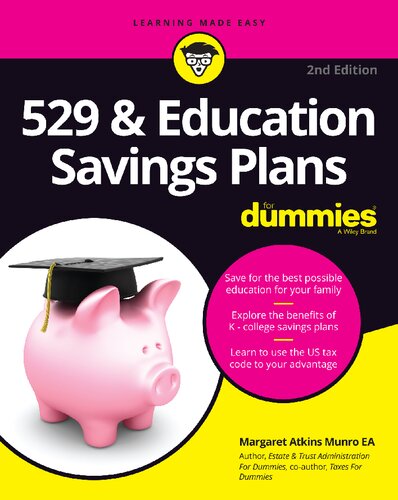

Most ebook files are in PDF format, so you can easily read them using various software such as Foxit Reader or directly on the Google Chrome browser.
Some ebook files are released by publishers in other formats such as .awz, .mobi, .epub, .fb2, etc. You may need to install specific software to read these formats on mobile/PC, such as Calibre.
Please read the tutorial at this link: https://ebookbell.com/faq
We offer FREE conversion to the popular formats you request; however, this may take some time. Therefore, right after payment, please email us, and we will try to provide the service as quickly as possible.
For some exceptional file formats or broken links (if any), please refrain from opening any disputes. Instead, email us first, and we will try to assist within a maximum of 6 hours.
EbookBell Team

5.0
38 reviewsDon't let money get in the way of your kids' best education
529 & Education Savings Plans For Dummies helps you sort through the vast amount of information about education savings accounts and choose the plans that are best for you and your family. A college or private K-12 education is generally parents' single largest expense for their children. 529 plans and 530 plans (Coverdell accounts) are relatively solid investment vehicles that can make saving for college much easier, providing tax advantages that other types of investments can't match. Education savings can be part of your overall wealth accumulation strategy, and this book can show you which plans are right for you, help you decide when to start saving, and guide you through determining how much to save per year in order to meet your goals—and help your kids meet theirs.
• Learn about the different types of tax-sheltered and tax-advantaged ways to save for education
• Create a saving and investment strategy that makes sense for your family
• Demystify the 529 and 530 plan rules and maximize your tax advantage
• Help set your kids on the path to success and to their college of choice
This is the perfect Dummies guide for parents or family members who want to begin saving for a college or K-12 education and who may want to supplement their current savings with tax-sheltered, education-specific accounts, or tax-advantaged investment accounts that may be used for education funding.